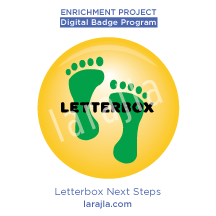 “Letterbox Basics” gave you the basics, making the sport as easy as possible. This badge program expands on the basics so you can explore this in even more depth. There are more cool things than listed here, so don’t let this badge program be your last step.
“Letterbox Basics” gave you the basics, making the sport as easy as possible. This badge program expands on the basics so you can explore this in even more depth. There are more cool things than listed here, so don’t let this badge program be your last step.
Steps
1. Brief history.
In the United States, the Smithsonian magazine published an article on the Dartmoor letterboxes (April 1998). There are as many as 10,000 letterboxes at this National Park. Rubber stampers and others got together and started doing it as well. Find out more about the history of letterboxing.
2. In depth online.
Two online sites should be your “go to” for all things letterboxing. Visit both of these sites.
Start looking at some of the more advanced information to learn even more about letterboxing and expand your experiences.
3. Find sites.
Go beyond the two letterbox sites listed on the step above. You might find letterboxes listed specific to an area, an organizational property, etc. Find and visit at least two sites not on the sites above.
4. Online groups.
Find online groups that support letterboxing. Join one and see what they are doing to help support the sport.
Expand letterboxing
5. Art — make your own stamps.
When making your own stamps, be sure to make sure it is no larger than 2-3 inches square. The logbooks in letterboxes can be small so you want to be sure you can stamp in them. You can make your own stamps from fun foam shapes, found items and more. To explore making stamps further, see the Adult Enrichment Project badge program “Handmade Stamps”.
6. Art — basic bookmaking.
Make your own logbook by creating a simple book. It can be pages you’ve put together in a binder, a minibook, etc. Decorate your book with a special cover or use your own imagination.
Check out the supplements to create your own 5.5 x 8.5-inch or 4.25 x 5.5-inch minibook.
7. Hitchhiker.
A hitchhiker is a stamp that isn’t permanent like the one in the letterbox or your personal stamp. Intead, it “wanders” from one letterbox to another via the people who find it. If you want to move one, be aware that it should be in the next letterbox within two weeks. If you can’t guarantee you’ll make the timeline, don’t take the hitchhiker.
8. Bonus clues.
Sometimes you can find bonus clues in the back of a logbook. The letterboxes you find from these bonus clues are known as “bonus letterboxes.” Be sure to check it out!
9. Mystery letterbox.
Mystery letterboxes are letterboxes that have very vague clues . . . and sometimes no clue. You need to do a lot of work to find them. See if you can find a mystery letterbox.
10. Cuckoo clue.
A cuckoo clue is a clue without a home. It moves between letterboxes . . . normally within a specified area. Watch to see if you can find any cuckoo clues.
11. Personal traveler.
These letterboxes are kept with the creator. To get access to the letterbox, you must know the password / passcode. Find a personal traveler.
12. Hybrids.
As you letterbox, you may stumble across geocache sites. Since the rules are a bit different, each group is annoyed with the other when they “do the wrong thing.” As a result, hybrids have sprung up. Learn about hybrids.
13. Virtuals.
There are virtual letterboxes that you can also find. You need to pose a question, solve a problem or other clue to “unlock” a virtual image that serves as your “stamped image.”
Supplements Available
Sites to Explore
- www.letterboxing.org
- www.letterboxing.org/Smithsonian.html
- en.wikipedia.org/wiki/Letterboxing_(hobby)
- letterboxing.info
- www.atlasquest.com
To download a PDF of this badge program, click here: EP_Letterbox Next Steps
Leave a Reply